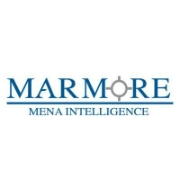This comes at the expense of monetary policy flexibility. Stable domestic currency and a fixed exchange rate imply that traders do not have to face currency risks, and therefore will be more willing to invest and facilitate trade. Since oil is the chief commodity in the GCC, and the oil price is fixed in dollars, any exchange rate fluctuation could drastically reduce revenue if the currencies were unpegged.
With the US economy expanding, the Federal Reserve has begun hiking interest rates gradually, and plans to achieve a target of 3 per cent by the end of 2018.
Also Read:"FED Interest & Impact on GCC"
While the US is expected to ride a growth wave over the next few years, the GCC economies, especially the oil exporters, are facing contraction because of low oil prices. Declining oil revenue, subdued global growth, liquidity crunch and geopolitical issues are some of the challenges facing the region.
These differences are starker in countries such as Saudi Arabia, the world’s largest oil producer and exporter, where more than 73 per cent of government revenues come from the hydrocarbon sector, according to the Institute of International Finance industry group.
In such a scenario, Saudi Arabia can either follow the monetary policy direction set by the US or deviate from it.
If it opts for the former, the kingdom maintains the peg but sacrifices its growth, as it will tighten monetary conditions during a period of low growth. According to the kingdom’s central bank, the Saudi Arabian Monetary Agency (Sama), a 100 basis point increase in the Saudi Interbank Offered Rate (Sibor) leads to a decline of 90 basis points in GDP in the subsequent quarter and 95 basis points in the quarter after that.
Suggested Read:"Food & beverage Sector in UAE"
If it opts for the latter, then there will be a gap in interest rates between the US and Saudi Arabia, leading to arbitrage opportunities. To counter this, Sama will have to buy Saudi riyals in the open market by selling US dollars from its reserves. And as the Fed increases the interest rate, Sama has to keep depleting its forex reserves until it runs out of dollars. Hence there is a cost involved with either choice.
The oil price fall since mid-2014, has reduced the kingdom’s revenue, incurring a deficit of $98bn in 2015, and it is estimating a further $87bn deficit in 2016. The Saudi government had funded this deficit by drawing down its central bank deposits, reducing its forex reserves to $602bn; a drop of $132bn, in the year to this January.
During the last Fed hike, Saudi Arabia, along with other GCC countries, raised its interest rates tracking the US monetary policy. According to Moody’s, the kingdom has large foreign currency reserves that provide ample room to maintain the pegged exchange rate regime for several years, even in an adverse oil price scenario. At present, Sama holds about 80 per cent of its investments in US Treasury bills.
While this should have been a clear indication of Sama’s direction, early this year the forwards market for the Saudi riyal sprang to life with speculation that the kingdom could be forced to abandon its three- decade peg to the US dollar. The market expected a 12-month forward exchange rate of 3.85 riyals to the dollar, a 2.7 per cent devaluation from the 3.75 level that has, in essence, held since 1986.
Sama doused the speculation by reiterating that it will continue to stick with its currency peg, and ordered banks in the kingdom to stop offering options contracts on riyal forwards to their clients.
Other GCC countries with sufficient SWF assets and central bank reserves, such as Kuwait, Qatar and the UAE, could also maintain the peg with little difficulty.
However, Oman and Bahrain do not enjoy this luxury, and could potentially run out of reserves in less than three years. Both these countries have resorted to issuing debt to extend the longevity of their reserves.
For Saudi Arabia, speculation about the possibility of depegging its currency from the US dollar may have been premature, but it has provided an opportunity to analyse the costs incurred by the kingdom in maintaining the peg, and whether an alternative exists to the current scenario. While the low oil price does not seem to have affected the peg much, thanks to the presence of ample forex reserves, it could have severe repercussions in the future, if the low prices persist.
Looking ahead, cost benefit analysis, stress and scenario testing are a must to gauge the extent to which the status quo is preferable. While the advantages of maintaining the peg are manifold, so are the costs. Ergo, Saudi must also chart out a road map and prepare for a time where depegging from the US dollar is a preferable option to continuing with an expensive peg.
MR Raghu is the managing director of Marmore Mena Intelligence, a research house focused on conducting Mena-specific business, economic and capital market research.
Stay Tuned To Marmore MENA Insights!
Never miss a patch or an update with Marmore's Newsletter. Subscribe now!
Related Article
The uptick in MENA Eurobond issuances – A sign of things to come?
MENA debt issuances have touched record highs in Q1 2025. Will the uptick continue in subsequent quarters?
Read MoreKuwait’s Approval of Public Debt Law: Re-emerging on Investors’ Radar
Kuwait has passed the long-awaited debt law in March 2025. The blog explores the importance of the law, the expected benefits and outlook for the countrys return to debt markets.
Read MoreThe Dynamic Rise of Fintech in the GCC
The convergence of technology and finance is reshaping the GCC Financial Ecosystem. The blog explores key players, regulatory framework and market dynamics of Fintech in the GCC region.
Read More




